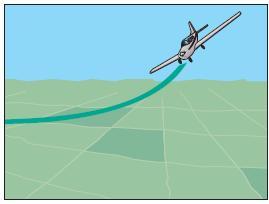Emergency Descent
2/11/2013
Posted in
Flight Training
Tags: emergency descents

The new Private pilot Practical Test Standards dated June 1, 2012, Area of Operation X, Task A (IX Task A in the Commercial PTS dated June 1, 2012) requires applicants to demonstrate their ability to properly perform the Emergency Descent.
Emergency Descent
Written by: Marc Nathanson (Retired Lt. Col USAF, Designated Pilot Examiner)
The new Private pilot Practical Test Standards dated June 1, 2012, Area of Operation X, Task A (IX Task A in the Commercial PTS dated June 1, 2012) requires applicants to demonstrate their ability to properly perform the Emergency Descent.
It is interesting to note that FAA-H-8083-3A, pages 16-6 and 16-7 state that the “Emergency descent training should be performed as recommended by the manufacturer, including the configuration and airspeeds.”
When I looked at chapter 3 of the C-172SP, ARROW and the C-172M, POHs I could not find a procedure that specifically addressed the emergency descent other than for emergency landing without engine power, which has us glide at 70 KIAS with the flaps up and 65 KIAS with them extended in the SP. This method keeps us airborne the longest as opposed to getting the aircraft on the ground immediately for such emergencies as electrical, or cockpit fires. We do see that the POH calls for us to accelerate to 100 KIAS for an engine fire in flight which should put the fire out using a higher airspeed if necessary, but nothing that tells us how to execute the emergency descent other than to go to max glide as described above or faster to put an engine fire out. The Duchess POH, on the other hand, does have a procedure that outlines the proper way to perform the emergency descent.
I understand that the crew of the Swissair MD-11 tried to complete emergency checklist items while the aircraft burned in the forward cabin area as a result of a short in the entertainment unit (DVD). It is impossible for me to say that other options were available. Would an emergency descent have made a difference? Could they have survived the emergency had they ditched in the ocean? I had a very good friend almost lose his life in a DC-10 due to a cargo fire. He told me that things happened so quickly there was no time to complete many of the checklist as the crew correctly performed the emergency descent procedures and successfully landed at Stewart Airport in New York. They knew that a fire in the cabin would be catastrophic and getting the big bird in the ground was the first priority.
So, what to do? What should we be teaching to our students?
By using different scenarios we can best teach which type of descent works best for a particular situation. As an example, for a cockpit fire, perform the POH procedure simulating the use of the fire extinguisher (fire it at the base of the fire) and properly operate the vents to clear out smoke and fumes, etc and for any emergency where the vertical speed needs to be the greatest for “any other situation demanding an immediate and rapid descent”.
An engine fire is different in that we want to put the fire out by increasing airspeed and, when the fire is extinguished, use the best glide to make it to an emergency landing site.
The emergency descent is different from the steep spiral (FAA-H-8083-3A beginning on page 9-3) in that the spiral “is not only a valuable training maneuver, but has a practical application in providing a procedure for dissipating altitude while remaining over a selected spot in preparation for landing, especially for emergency forced landings.” Remember that it is a constant gliding turn so glide speed is in order here.
Show your students the difference between emergency descents with full flaps just below the max full flap airspeed (careful not to exceed it and it is best to stay a few knots below so we don’t wear out the flaps and associated hardware) flying straight ahead and in the same configuration in a 30°-45° banked turn and without flaps. The rate of descent will be higher in the banked turn considering all other parameters are maintained. I want to emphasize the importance of not exceeding the flap limits. I suggest keeping your hands on the controls to make certain this does not happen.
In discussing the emergency descent my FAA Inspector at our local FSDO suggested that the emergency descent can be evaluated with or without flaps unless a specific procedure is required by the aircraft POH or fight manual.
I strongly recommend that you ensure your students understand the importance of understanding the reason why we teach the emergency descent.
And, finally, consider this; will the fire burn through flight controls, render the electrical system inoperative at night or in the weather, or incapacitate the crew? All things to be considered.
Fly Safe